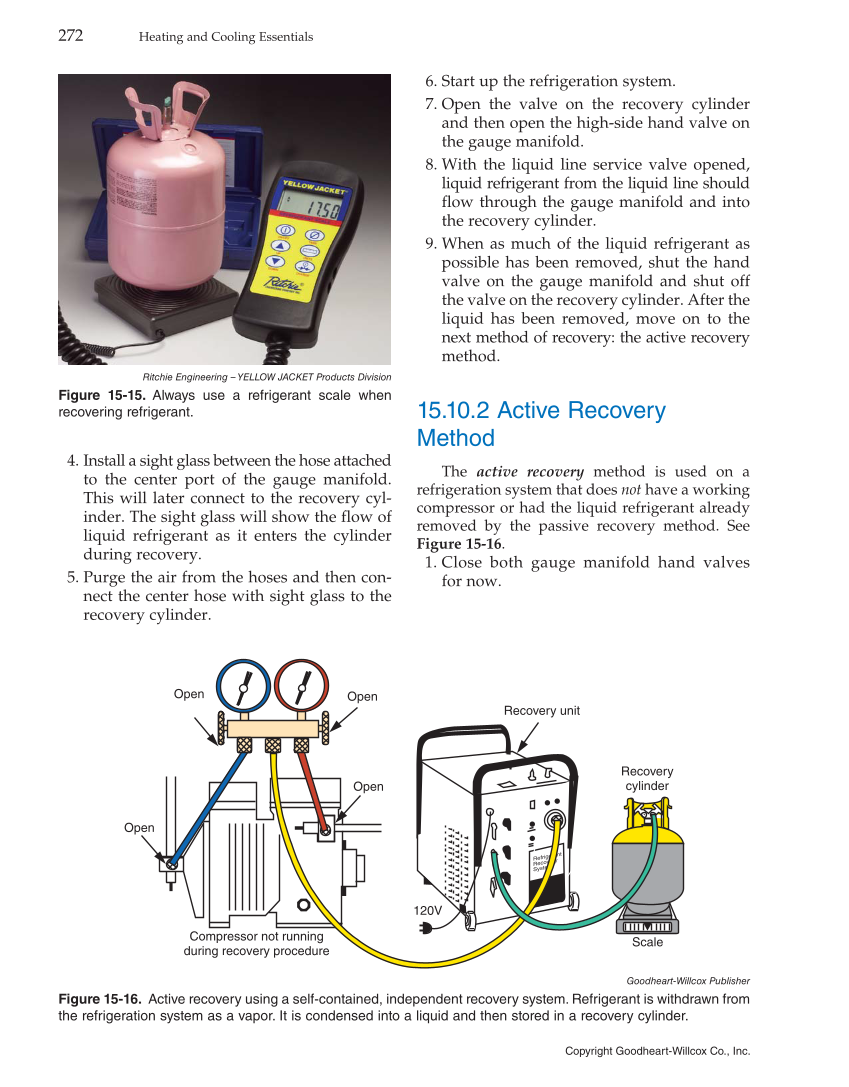6. Start up the refrigeration system. 7. Open the valve on the recovery cylinder and then open the high-side hand valve on the gauge manifold. 8. With the liquid line service valve opened, liquid refrigerant from the liquid line should flow through the gauge manifold and into the recovery cylinder. 9. When as much of the liquid refrigerant as possible has been removed, shut the hand valve on the gauge manifold and shut off the valve on the recovery cylinder. After the liquid has been removed, move on to the next method of recovery: the active recovery method. 15.10.2 Active Recovery Method The active recovery method is used on a refrigeration system that does not have a working compressor or had the liquid refrigerant already removed by the passive recovery method. See Figure 15-16. 1. Close both gauge manifold hand valves for now. 4. Install a sight glass between the hose attached to the center port of the gauge manifold. This will later connect to the recovery cyl- inder. The sight glass will show the flow of liquid refrigerant as it enters the cylinder during recovery. 5. Purge the air from the hoses and then con- nect the center hose with sight glass to the recovery cylinder. Ritchie Engineering – YELLOW JACKET Products Division Figure 15-15. Always use a refrigerant scale when recovering refrigerant. Refrigerant Recovery System Recovery cylinder Scale 120V Recovery unit Open Open Compressor not running during recovery procedure Open Open Goodheart-Willcox Publisher Figure 15-16. Active recovery using a self-contained, independent recovery system. Refrigerant is withdrawn from the refrigeration system as a vapor. It is condensed into a liquid and then stored in a recovery cylinder. 272 Heating and Cooling Essentials Copyright Goodheart-Willcox Co., Inc.
